Related Research Articles

The United Nations University (UNU) is the academic and research arm of the United Nations. Headquartered in Shibuya, Tokyo, Japan, with diplomatic status as a U.N. institution, its mission is to help resolve global issues related to human development and welfare through collaborative research and education.

The University of Tokyo, abbreviated as Todai or UTokyo, is a public research university located in Bunkyō, Tokyo, Japan. Established in 1877, the university is the first Imperial University and currently selected as a Top Type university of Top Global University Project by the Japanese government.

Masatoshi Koshiba was a Japanese physicist and one of the founders of neutrino astronomy. His work with the neutrino detectors Kamiokande and Super-Kamiokande was instrumental in detecting solar neutrinos, providing experimental evidence for the solar neutrino problem.
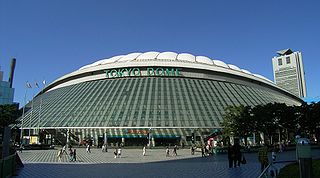
Bunkyō is a special ward located in Tokyo, Japan. Situated in the middle of the ward area, Bunkyō is a residential and educational center. Beginning in the Meiji period, literati like Natsume Sōseki, as well as scholars and politicians have lived there. Bunkyō is home to the Tokyo Dome, Judo's Kōdōkan, and the University of Tokyo's Hongo Campus. Bunkyō has a sister-city relationship with Kaiserslautern in the Rhineland-Palatinate of Germany.

Nihon University, abbreviated as Nichidai (日大), is a private research university in Japan. Its predecessor, Nihon Law School, was founded by Yamada Akiyoshi, the Minister of Justice, in 1889. It is one of Japan's leading private universities. The university's name is derived from the Japanese word "Nihon" meaning Japan. Nihon University now has "16 colleges and 87 departments, 20 postgraduate schools, 1 junior college which is composed of 5 departments, 1 correspondence division, 32 research institutes and 3 hospitals." The number of students exceeds 70,000 and is the largest in Japan.
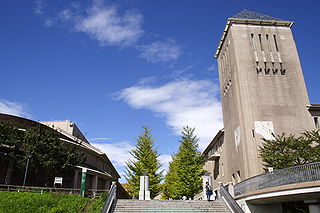
Tokyo Metropolitan University, often referred to as TMU, is a Public Research University in Japan.
Sophia University is a private research university in Japan. Sophia is one of the three prestigious Sōkeijōchi (早慶上智) private universities, a group of the top three private universities in Japan with the other two being Keio University and Waseda University, according to the Times Higher Education. It is also ranked number 18 in the 2021 Times Japan University Rankings. Founded by the Roman Catholic religious order of the Society of Jesus in 1913, the university has grown from its three original academic departments of Philosophy, German Literature, and Commerce to 9 undergraduate Faculties and 10 Graduate Schools, with over 13,900 students in total at the moment.

Rikkyo University, also known as Saint Paul's University, is a private university, in Ikebukuro, Tokyo, Japan.

Hosei University is a private university based in Tokyo, Japan.

Germany–Japan relations, also referred to as German-Japanese relations, were officially established in 1861 with the first ambassadorial visit to Japan from Prussia. Japan modernized rapidly after the Meiji Restoration of 1867, often using German models through intense intellectual and cultural exchange. After Japan aligned itself with Britain in 1900, Germany and Japan became enemies in World War I. Japan declared war on the German Empire in 1914 and seized key German possessions in China and the Pacific.

Hajime Nakamura was a Japanese Orientalist, Indologist, philosopher and academic of Vedic, Hindu and Buddhist scriptures.

The Historiographical Institute of the University of Tokyo is a research institution affiliated with the University of Tokyo that is devoted to the analysis, compilation, and publication of historical source materials concerning Japan. Since its foundation in 1869, the Institute has been a major center of Japanese historical research, and makes historical sources available through its library, publications, and databases.
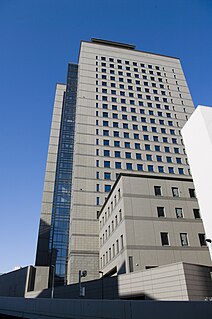
The National Institute of Informatics is a Japanese research institute located in Chiyoda, Tokyo, Japan. NII was established in April 2000 for the purpose of advancing the study of informatics. This institute also works on creating systems to facilitate the spread of scientific information to the general public. It oversees and maintains a large, searchable information database on a variety of scientific and non-scientific topics called Webcat. NII is the only comprehensive research institute in informatics in Japan. It is a major part of the Graduate University for Advanced Studies, SOKENDAI, and since 2002 has offered a Ph.D. program in informatics.

Aoyama Gakuin University is a private Christian university in Shibuya, Tokyo, Japan. Originally established in 1874 by missionaries from the Methodist Episcopal Church, it was reconfigured in its current form in 1949 as part of Aoyama Gakuin. Aoyama Gakuin University celebrated its 140-year anniversary in 2014 and is one of Japan's oldest higher education facilities.
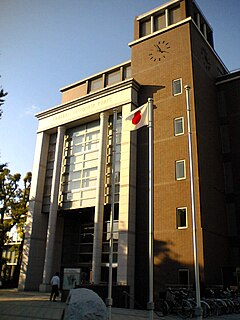
Kokushikan University is a private university in Setagaya, Tokyo, Japan.
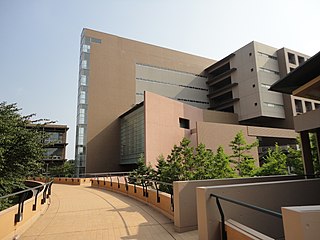
Tokyo University of Foreign Studies, often referred to as TUFS, is a specialist research university in Fuchū, Tokyo, Japan.

Senshu University is a private university in Chiyoda, Tokyo, Japan.
Timon Screech was professor of the history of art at the School of Oriental and African Studies (SOAS), University of London from 1991 - 2021, when he left the UK in protest over Brexit. He is now a professor at the International Research Center for Japanese Studies (Nichibunken) in Kyoto. Screech is a specialist in the art and culture of early modern Japan.

Sengaku Mayeda is a Japanese writer, philosopher and teacher, known for his writings on Indian philosophy and Adi Shankara. He was honoured by the Government of India, in 2014, by bestowing on him the Padma Shri, the fourth highest civilian award, for his services to the fields of literature and education. He is the fourth Japanese to be honoured with Padma Shri, after Taro Nakayama, Shoji Shiba and Prof. Noboru Karashima. He is also a recipient of the Third Order of Merit with the Middle Cordon of the Rising Sun of the Government of Japan, which he received in 2002.